In Arizona, a spectacular array of hawks graces the skies, adding a touch of wild beauty to the desert landscapes.
Among the thirteen remarkable species that call this southwestern state home, each hawk boasts unique characteristics and adaptations, contributing to the rich biodiversity of Arizona’s ecosystems.
From the iconic Golden Eagle soaring over mountainous terrains to the agile Peregrine Falcon darting through canyons, these birds of prey captivate with their diverse hunting techniques and striking plumage.
Join us on a journey through the vibrant tapestry of Arizona’s avian life as we delve into the lives of these thirteen hawks, exploring their habitats, behaviours, and the vital roles they play in the intricate web of nature. Stay focused.
13 Hawks in Arizona
Go through the diverse avian wonders of Arizona with this concise guide to hawks and falcons.
From the majestic Golden Eagle to the agile Peregrine Falcon, discover the fascinating characteristics, habitats, and behaviours of these birds of prey that grace the skies of the Grand Canyon State.
1. Ferruginous Hawk
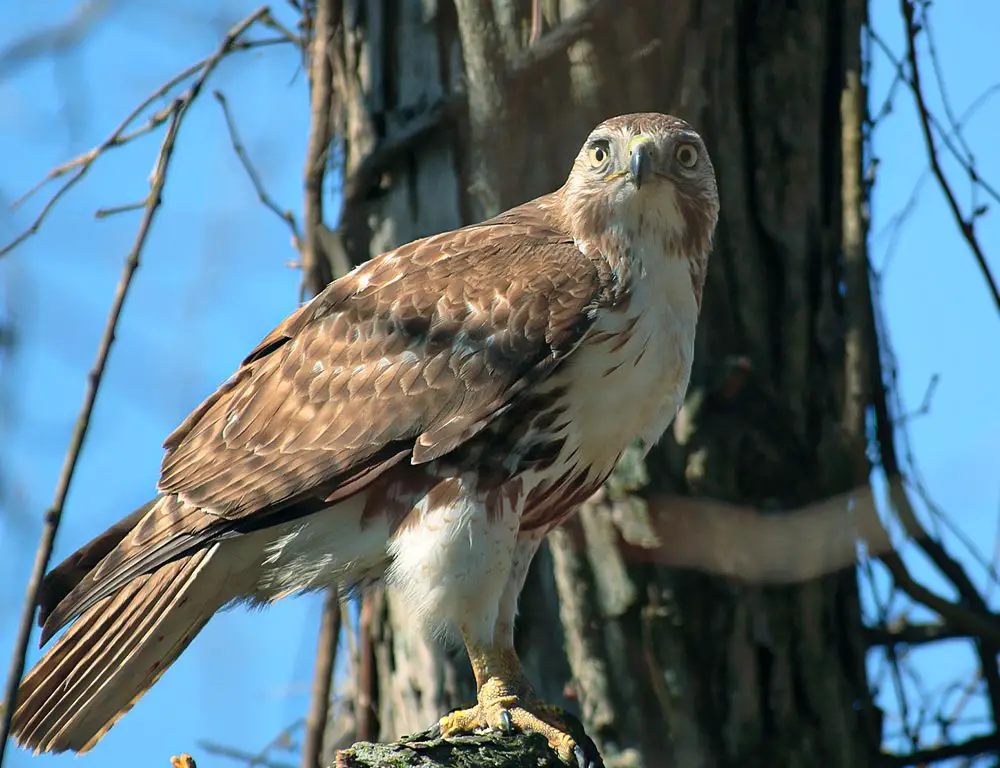
- Scientific name: Buteo regalis
- Category: Buteo
- Life span: 8-10 years
- Size: 22-27 inches
- Weight: 2.4-4.2 pounds
- Wingspan: 4.9-5.9 feet
- Status: Least Concern (IUCN)
The Ferruginous Hawk is a majestic bird of prey found in Arizona’s open grasslands and deserts. Its distinctive rusty or white plumage makes it the largest hawk in North America.
These hawks are known for their keen eyesight, powerful build, and impressive wingspan. Ferruginous Hawks primarily feed on small mammals, such as ground squirrels and prairie dogs.
They are skilled hunters, using their sharp talons to catch and kill their prey. During the breeding season, they build nests on cliffs or in trees, and they are known for their monogamous behaviour.
2. Northern Goshawk
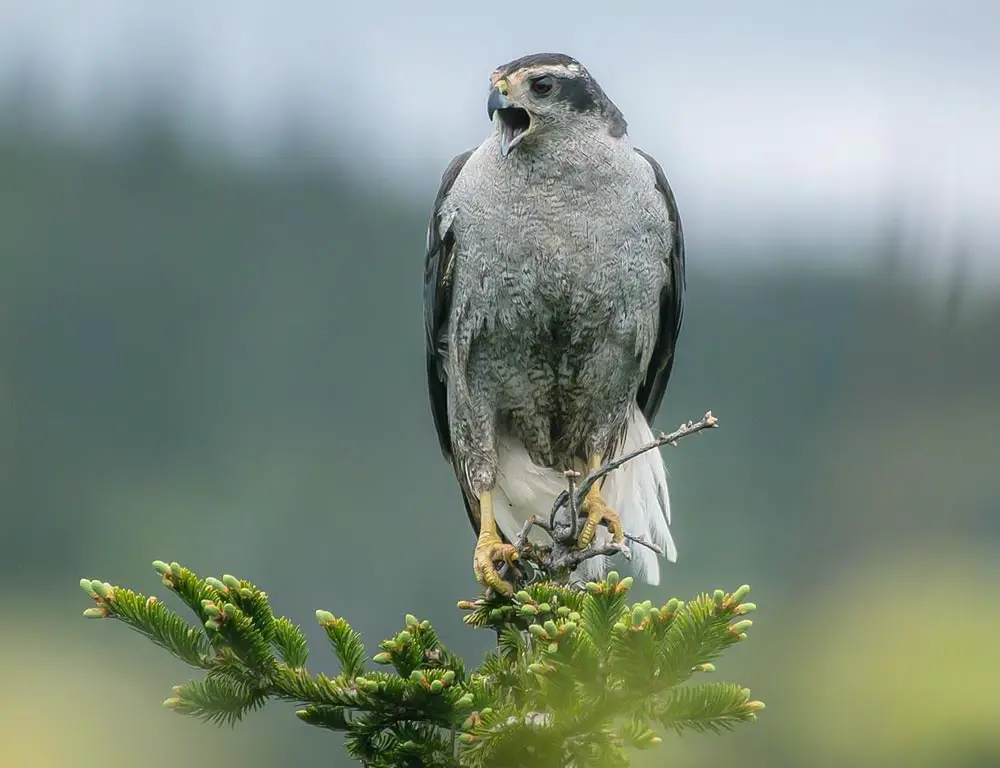
- Scientific name: Accipiter gentilis
- Category: Accipiter
- Life span: 4-8 years (wild)
- Size: 20-26 inches
- Weight: 1.5-3.5 pounds
- Wingspan: 3.3-4.6 feet
- Status: Least Concern (IUCN)
The Northern Goshawk is a powerful and secretive forest-dwelling hawk found in Arizona’s woodlands. Its plumage varies, but adults typically have a dark gray back and a lighter, barred front.
Northern Goshawks are agile fliers, navigating dense forests with ease. They primarily prey on birds and mammals, using their sharp talons and strong beaks to capture and consume their prey.
During the breeding season, they build nests high in trees. These hawks are known for their fierce territorial behaviour, especially when protecting their nests.
3. Common Black Hawk
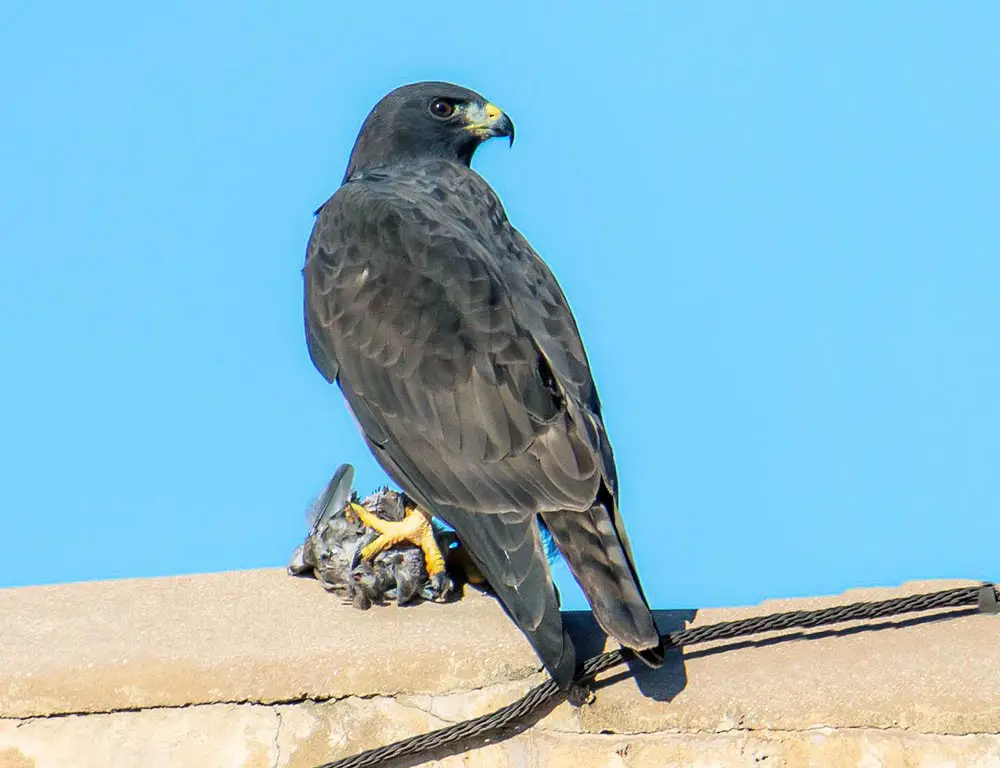
- Scientific name: Buteogallus anthracinus
- Category: Accipitridae
- Life span: 10-15 years
- Size: 18-22 inches
- Weight: 1.2-2.2 pounds
- Wingspan: 3.3-3.7 feet
- Status: Least Concern (IUCN)
The Common Black Hawk is a distinctive raptor found along rivers and streams in Arizona. With its black plumage and striking red legs, it is easily recognizable.
These hawks primarily feed on fish and amphibians, often hunting by soaring over water and diving to catch their prey with their sharp talons.
Common Black Hawks build nests in trees near water sources and are known for their strong parental instincts.
They are highly territorial during the breeding season and can be observed performing aerial displays to establish and defend their territories.
4. Harris’s Hawk
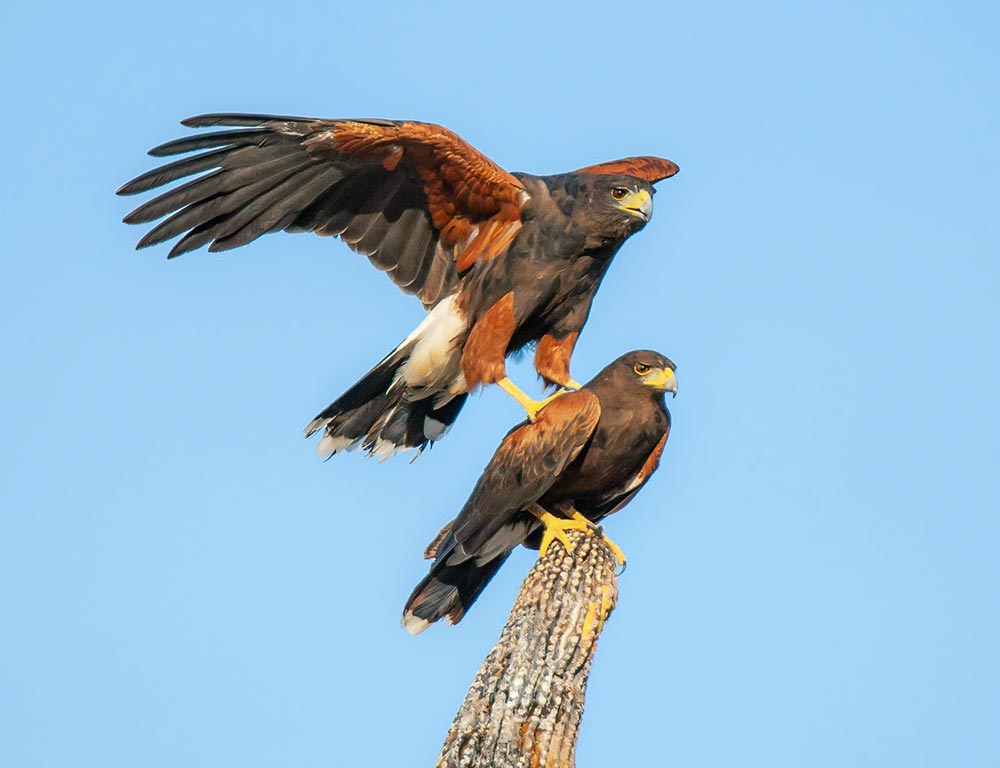
- Scientific name: Parabuteo unicinctus
- Category: Accipitridae
- Life span: 10-12 years (wild)
- Size: 18-24 inches
- Weight: 1.5-2.6 pounds
- Wingspan: 3.5-4 feet
- Status: Least Concern (IUCN)
Harris’s Hawk is a socially intelligent bird of prey found in Arizona’s deserts and scrublands. Its plumage is dark brown, with chestnut shoulders and thighs.
These hawks are known for their cooperative hunting behaviour, often working together in family groups. They prey on small mammals, birds, and reptiles, using their sharp talons and strong beaks.
Harris’s Hawks build nests in trees or shrubs, and their strong social bonds contribute to their success as hunters. They are also popular in falconry due to their trainability and cooperative nature.
5. Gray Hawk
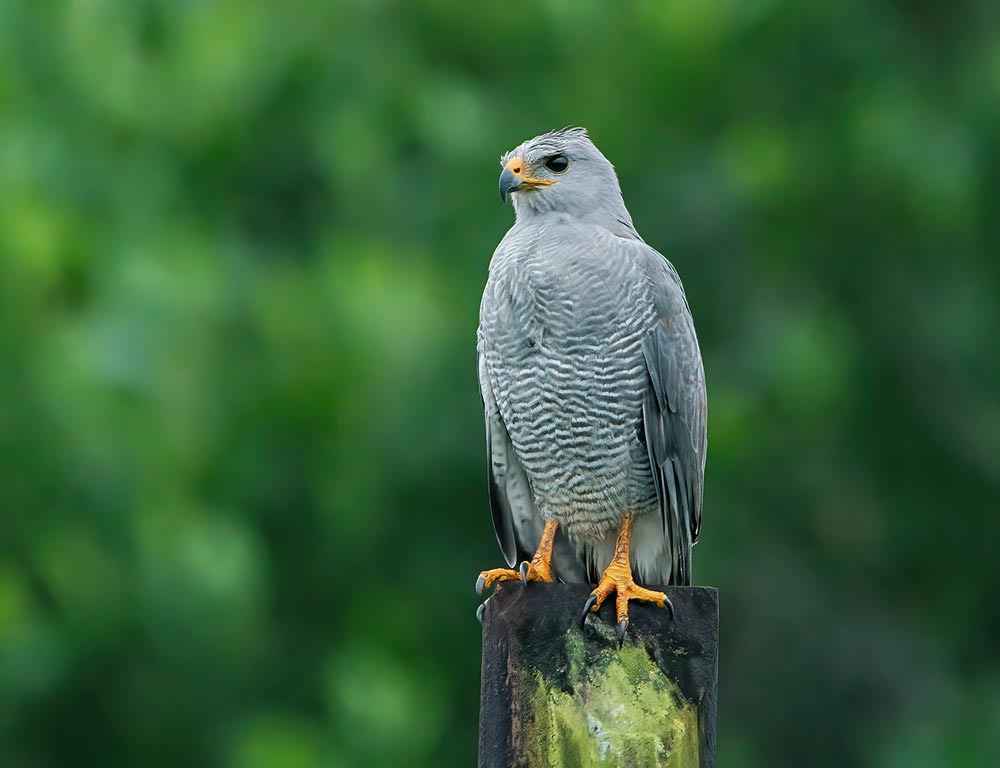
- Scientific name: Buteo plagiatus
- Category: Accipitridae
- Life span: 7-10 years (wild)
- Size: 16-20 inches
- Weight: 0.5-1.3 pounds
- Wingspan: 2.5-3 feet
- Status: Least Concern (IUCN)
The Gray Hawk is a small and agile raptor that inhabits riparian areas and wooded canyons in Arizona. Its plumage is primarily gray with rufous undertail coverts.
Gray Hawks feed on various prey, including small mammals, birds, and insects, and are known for their impressive aerial acrobatics. They build nests in trees near water sources and are often associated with dense vegetation.
These hawks are skilled at capturing prey by surprise, using their sharp talons and powerful beaks. They are generally solitary and secretive during the breeding season.
6. Northern Harrier
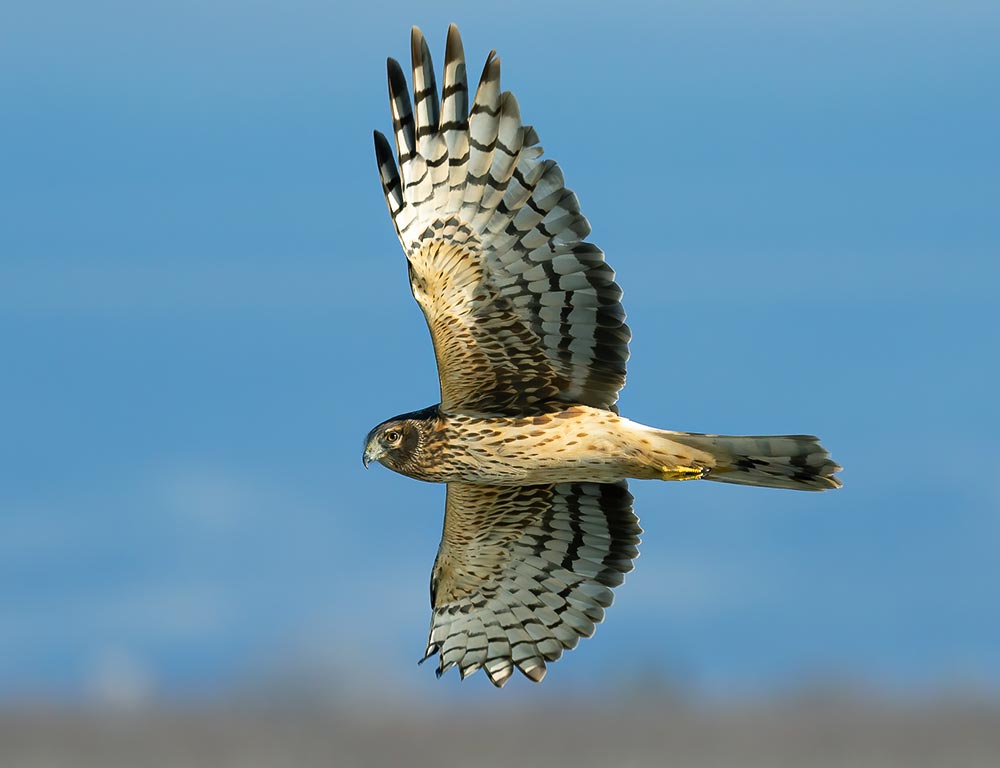
- Scientific name: Circus hudsonius
- Category: Circus
- Life span: 5 years (average)
- Size: 18-24 inches
- Weight: 0.6-1.6 pounds
- Wingspan: 3.5-4.5 feet
- Status: Least Concern (IUCN)
The Northern Harrier, also known as the Marsh Hawk, is a slender and distinctive hawk found in various habitats, including marshes and grasslands in Arizona.
These hawks have a distinctive white rump and a facial disk resembling an owl’s. Northern Harriers primarily feed on small mammals, birds, and, occasionally, amphibians.
They are known for their low, gliding flight as they hunt over open areas. Northern Harriers build nests on the ground, concealed in vegetation.
During the breeding season, males engage in aerial displays to attract females. Northern Harriers are known for their keen eyesight and ability to hover over prey before swiftly and precisely descending.
7. American Kestrel
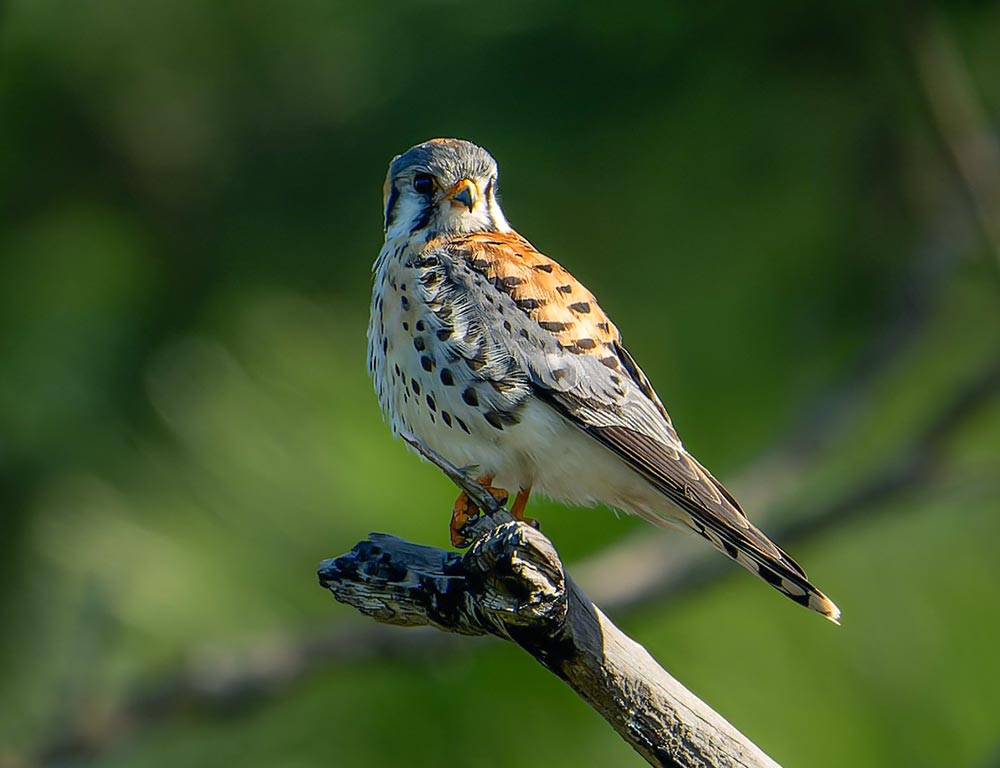
- Scientific name: Falco sparverius
- Category: Falconidae
- Life span: 5-10 years (wild)
- Size: 8-12 inches
- Weight: 2.8-5.8 ounces
- Wingspan: 20-24 inches
- Status: Least Concern (IUCN)
The American Kestrel, often called a “sparrow hawk,” is a small and colourful falcon commonly found in various habitats throughout Arizona.
It has distinctive plumage with blue-grey wings, a rusty back, and a white and black facial pattern.
American Kestrels primarily feed on insects, small mammals, and birds. They are known for their hovering hunting technique, which allows them to spot prey on the ground. Kestrels nest in tree cavities, cliffs, or even buildings.
They are adaptable birds that have successfully adapted to urban environments. Despite their small size, American Kestrels are agile and formidable hunters.
8. Bald Eagle
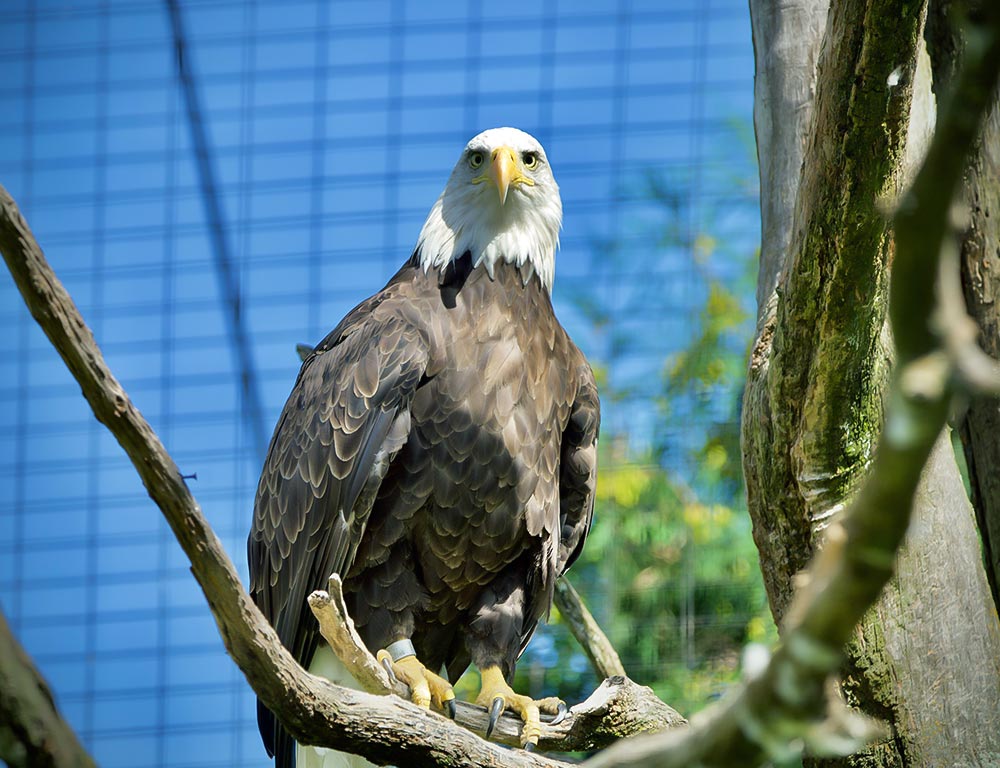
- Scientific name: Haliaeetus leucocephalus
- Category: Accipitridae
- Life span: 20-30 years (wild)
- Size: 28-40 inches
- Weight: 6.6-13.2 pounds
- Wingspan: 6.6-7.9 feet
- Status: Least Concern (IUCN)
The Bald Eagle, a symbol of strength and majesty, is a large bird of prey found near Arizona’s lakes, rivers, and coastal areas. It has a distinctive white head and tail, contrasting with a dark brown body.
Bald Eagles primarily feed on fish but also consume waterfowl and small mammals. They are known for their impressive fishing skills, often swooping down to snatch fish from the water with their powerful talons.
Bald Eagles build large nests in tall trees near water bodies and exhibit strong fidelity to their nesting sites. While once endangered, conservation efforts have contributed to the recovery of Bald Eagle populations in the United States.
9. Caracara plancus (Crested Caracara)
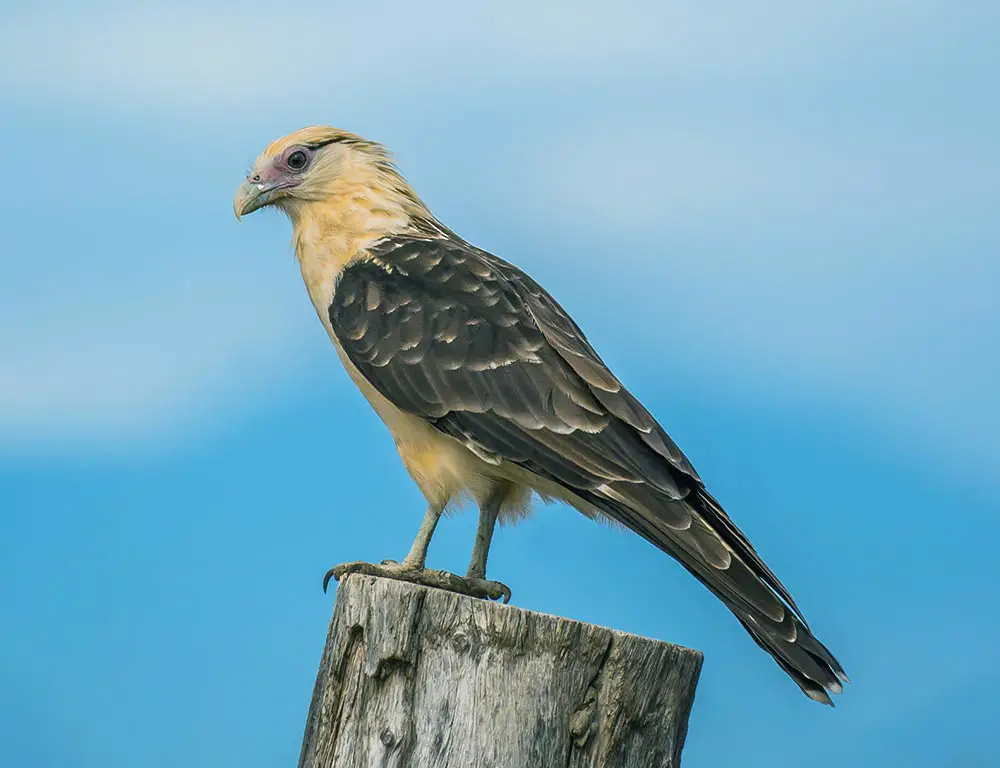
- Scientific name: Caracara plancus
- Category: Falconidae
- Life span: 10-15 years (wild)
- Size: 19-23 inches
- Weight: 1.5-3 pounds
- Wingspan: 3.5-3.9 feet
- Status: Least Concern (IUCN)
The Crested Caracara is a distinctive bird of prey found in Arizona’s open country, grasslands, and agricultural areas. It has a unique appearance: a black cap, a white neck, and a bare, reddish-orange face.
Crested Caracaras are opportunistic feeders, consuming a diverse diet that includes carrion, insects, small mammals, and birds. They are known for their scavenging behaviour and are often seen foraging on the ground.
Crested Caracaras build nests in trees or on the ground and may form loose colonies. These birds exhibit territorial behaviour, especially during the breeding season, and are known for their adaptability to various habitats.
10. Golden Eagle
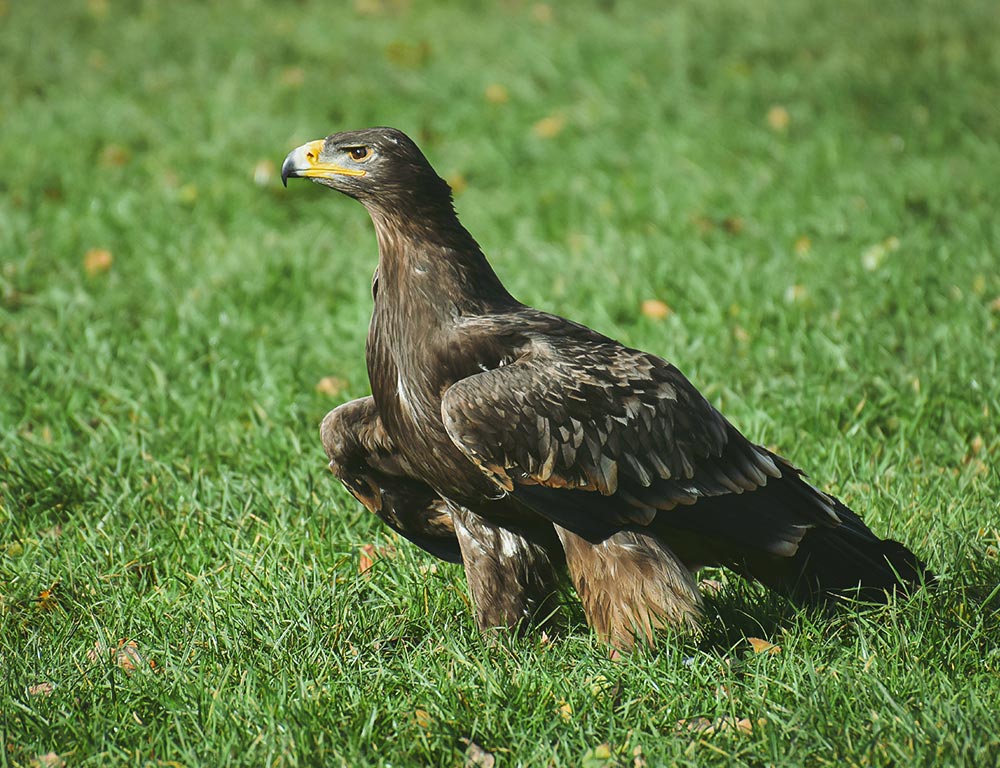
- Scientific name: Aquila chrysaetos
- Category: Accipitridae
- Life span: 20-30 years (wild)
- Size: 28-40 inches
- Weight: 7-14 pounds
- Wingspan: 6-7.5 feet
- Status: Least Concern (IUCN)
The Golden Eagle is a majestic bird of prey found in Arizona’s mountainous and open terrain. These eagles are powerful hunters with dark brown plumage and a golden nape.
They primarily feed on small mammals, birds, and occasionally carrion. Golden Eagles are known for their soaring flight, keen eyesight, and impressive hunting skills.
They build large nests on cliffs or rocky outcrops and exhibit strong territorial behaviour. Golden Eagles are renowned for their role in falconry due to their strength and intelligence.
11. Merlin

- Scientific name: Falco columbarius
- Category: Falconidae
- Life span: 5-10 years (wild)
- Size: 9-13 inches
- Weight: 5.3-8.8 ounces
- Wingspan: 20-26 inches
- Status: Least Concern (IUCN)
The Merlin is a small, agile falcon commonly found in Arizona’s open country and forests. With dark brown or slate-grey plumage, Merlin exhibits sexual dimorphism, with females being larger than males.
These falcons are highly skilled aerial hunters, preying on small birds, insects, and occasionally bats. Merlins use their speed and manoeuvrability to capture prey in flight.
They build nests in trees and are known for their migratory behaviour, with some individuals travelling long distances during seasonal movements.
12. Osprey
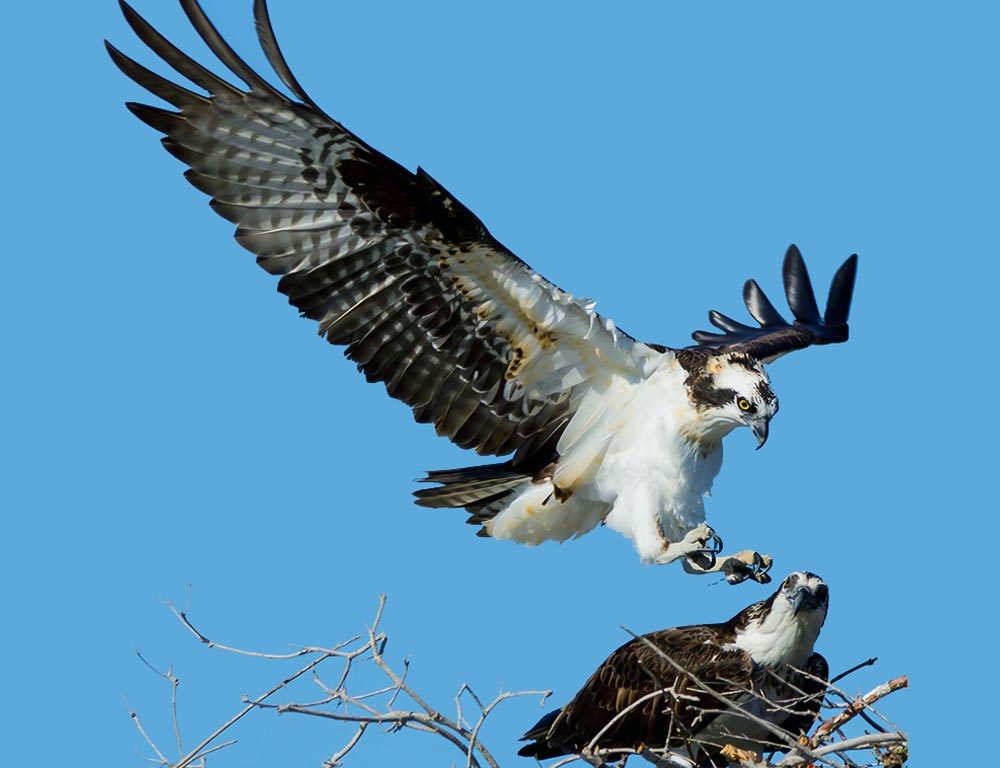
- Scientific name: Pandion haliaetus
- Category: Pandionidae
- Life span: 10-15 years (wild)
- Size: 21-24 inches
- Weight: 2.5-4.5 pounds
- Wingspan: 5.5-6.6 feet
- Status: Least Concern (IUCN)
The Osprey, also known as the fish hawk, is a distinctive raptor found near water bodies in Arizona. Ospreys have a white head, dark eye stripe, and a brown and white body.
They are specialized fish hunters, hovering over water and plunging feet-first to catch their prey with powerful talons. Ospreys build large stick nests on platforms, trees, or man-made structures near water.
They are well adapted to their piscivorous lifestyle, with reversible outer toes and specialized spiny pads on the soles of their feet to grasp slippery fish.
13. Peregrine Falcon
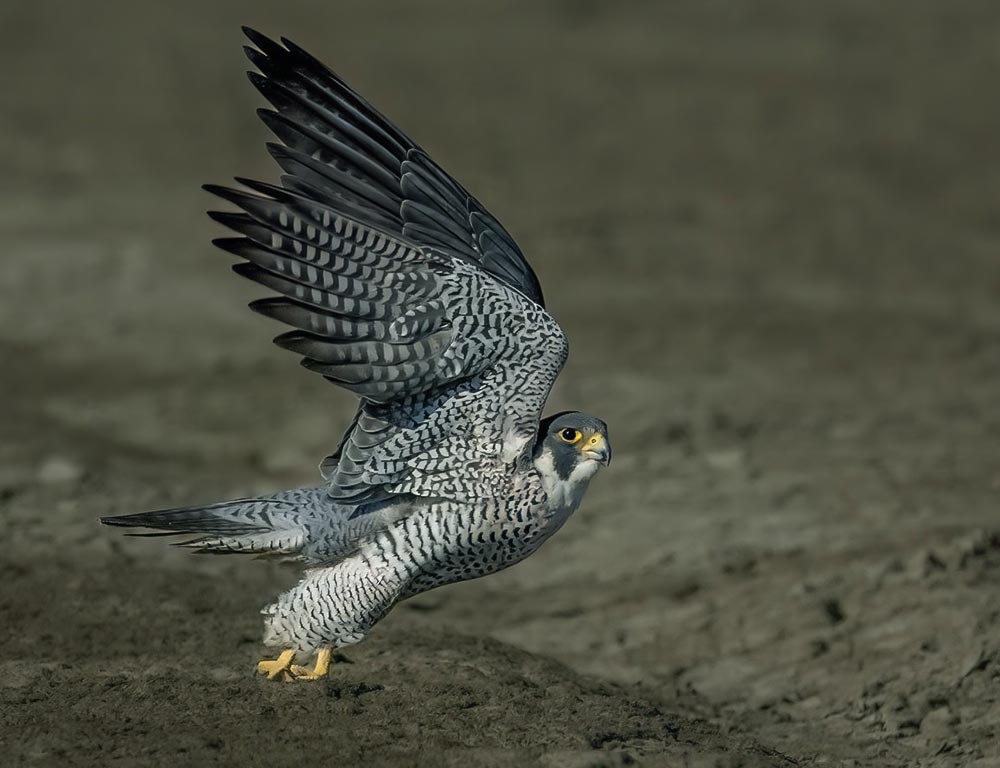
- Scientific name: Falco peregrinus
- Category: Falconidae
- Life span: 8-15 years (wild)
- Size: 14-20 inches
- Weight: 1.4-3.3 pounds
- Wingspan: 3.3-3.6 feet
- Status: Least Concern (IUCN)
The Peregrine Falcon is a globally distributed raptor found in various habitats in Arizona, including urban areas and cliffs.
With blue-grey plumage and distinctive dark markings on its face, Peregrine Falcons are known for their incredible speed and aerial prowess.
They are some of the fastest birds, reaching speeds over 240 mph during dives. Peregrine Falcons primarily feed on birds, capturing them mid-air in dramatic stoops. They build nests on cliffs, ledges, or man-made structures.
Conservation efforts, including captive breeding and falconry, have contributed to the recovery of Peregrine Falcon populations after being endangered due to pesticide exposure.
Wrapping Up
In Arizona’s vast and varied landscapes, hawks and falcons thrive, showcasing nature’s remarkable adaptations and aerial prowess.
Each species plays a unique role in the state’s ecosystem, from the powerful Golden Eagle to the swift Peregrine Falcon.
As we explored their diverse habitats, hunting techniques, and distinctive features, we gained a deeper appreciation for the delicate balance of nature within the Grand Canyon State.
These birds of prey are not just feathered inhabitants but guardians of the skies, embodying the wild spirit of Arizona’s wilderness. Best of luck.